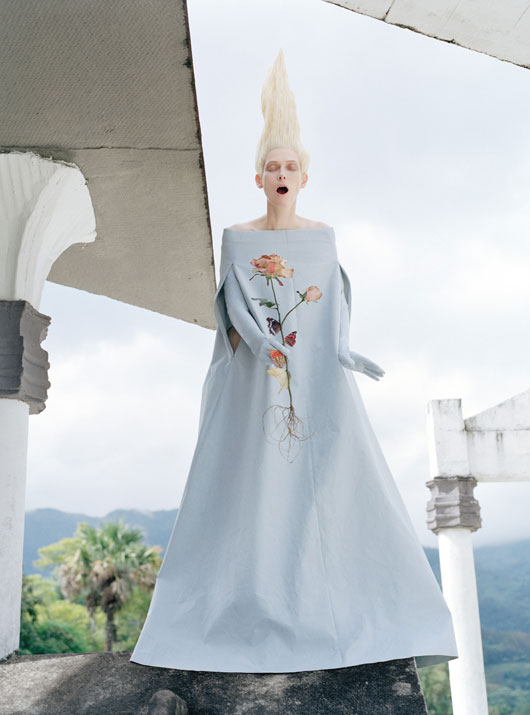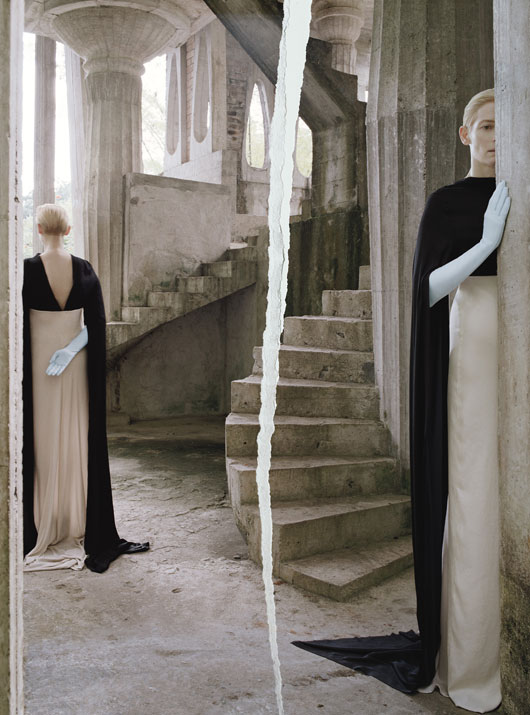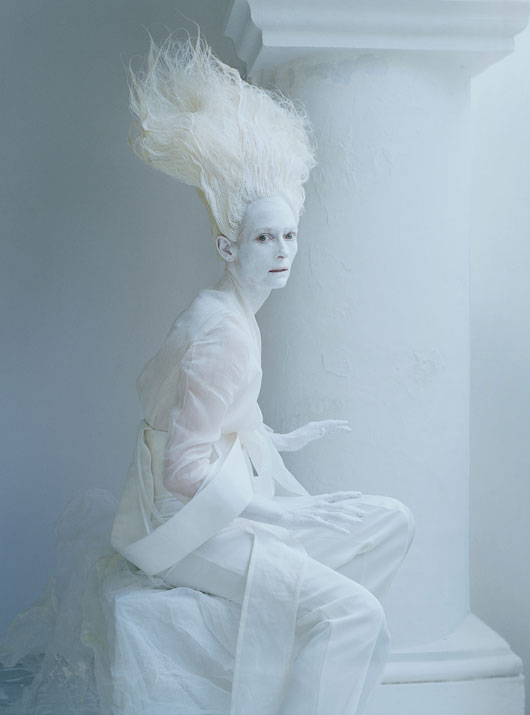 The Temptation of Saint-Anthony, by Max Ernst
The Temptation of Saint-Anthony, by Max Ernst
In 1946 the David L. Loew–Albert Lewin film production company held a contest for a painting on the theme of Saint Anthony’s Temptation, with the winner to be used in the film The Private Affairs of Bel Ami (Albert Lewin, 1947). The movie is in black and white except for the one shot of Max Ernst’s Temptation in color. Various artists produced paintings on this subject, and contest was won by Max Ernst, whose work was duly shown on-screen. However, the most well-known of these paintings is a failed contestant, Salvador Dalí‘s version. This was the only art contest in which Dalí participated during his lifetime.
 The Temptation of St. Anthony, Salvador Dalí, 1946
The Temptation of St. Anthony, Salvador Dalí, 1946
Besides Dalí and Ernst, Ivan Albright, Eugene Berman, Leonora Carrington, Paul Delvaux, Dorothea Tanning, Leonor Fini, Louis Guglielmi, Horace Pippin, Abraham Rattner and Stanley Spencer, were also invited to create a work on the theme. Fini did not produce a painting, but the others were paid $500 for their submissions, with an additional $2,500 prize for the winner.
 The Torment of Saint Anthony, attributed to Michelangelo, c. 1487–1488. Giorgio Vasari in his Lives of the Artists noted that Michelangelo had painted St. Anthony after a print by Martin Schongauer
The Torment of Saint Anthony, attributed to Michelangelo, c. 1487–1488. Giorgio Vasari in his Lives of the Artists noted that Michelangelo had painted St. Anthony after a print by Martin Schongauer
 The Temptation of St. Anthony, Hieronymus Bosch (triptych, c. 1501)
The Temptation of St. Anthony, Hieronymus Bosch (triptych, c. 1501)
Throughout history, artists and authors (including Paul Cézanne and Hieronymus Bosch) have used the temptation of St. Anthony as subject matter for creative works. Dalí’s depiction is classical, erotic, and surrealist.
The Temptation of Saint Anthony (French La Tentation de Saint Antoine) is a book which the French author Gustave Flaubert spent practically his whole life fitfully working on, in three versions he completed in 1849, 1856 (extracts published at the same time) and 1872 before publishing the final version in 1874. It takes as its subject the famous temptation faced by Saint Anthony the Great in the Egyptian desert, a theme often repeated in medieval and modern art.
The temptations of Saint Anthony were:
Frailty
The Seven Deadly Sins
The Heresiarchs
The Martyrs
The Magicians
The Gods
Science
Food
Lust and Death
The Monsters
Metamorphosis
In September 1849, Flaubert completed the first version of a novel, The Temptation of Saint Anthony. He read the novel aloud to Louis Bouilhet and Maxime Du Camp over the course of four days, not allowing them to interrupt or give any opinions. At the end of the reading, his friends told him to throw the manuscript in the fire, suggesting instead that he focus on day-to-day life rather than fantastic subjects.
Flaubert exercised an extraordinary influence over Guy de Maupassant, Edmond de Goncourt, Alphonse Daudet, Émile Zola and Franz Kafka. Even after the decline of the Realist school, Flaubert did not lose prestige in the literary community; he continues to appeal to other writers because of his deep commitment to aesthetic principles, his devotion to style, and his indefatigable pursuit of the perfect expression.
He has been admired or written about by almost every major literary personality of the 20th century, including philosophers and sociologists such as Michel Foucault, Roland Barthes, Pierre Bourdieu and Jean-Paul Sartre whose partially psychoanalytic portrait of Flaubert in The Family Idiot was published in 1971. The Peruvian novelist Mario Vargas Llosa is another great admirer of Flaubert.
 Cover of W magazine. Modern Beauty issue. May 2013
Cover of W magazine. Modern Beauty issue. May 2013 Givenchy by Riccardo Tisci dress; Cornelia James gloves
Givenchy by Riccardo Tisci dress; Cornelia James gloves Vera Wang Collection dress; Vicki Beamon lips and fingertips; Cornelia James gloves
Vera Wang Collection dress; Vicki Beamon lips and fingertips; Cornelia James gloves Maison Martin Margiela dress and gloves
Maison Martin Margiela dress and gloves Ann Demeulemeester dress; Cornelia James gloves
Ann Demeulemeester dress; Cornelia James gloves Balmain jacket; Max Mara jacket; Swinton’s own Olivier Saillard gloves
Balmain jacket; Max Mara jacket; Swinton’s own Olivier Saillard gloves Rochas dress; National Theatre Costume Hire underskirt; Cornelia James gloves; Céline pumps
Rochas dress; National Theatre Costume Hire underskirt; Cornelia James gloves; Céline pumps Angels the Costumiers cape; Gucci gown; Vicki Beamon mask; Cornelia James gloves
Angels the Costumiers cape; Gucci gown; Vicki Beamon mask; Cornelia James gloves Azzedine Alaïa top, skirt, and shoes; Emilio Cavallini bodysuit; Alexander McQueen headpiece
Azzedine Alaïa top, skirt, and shoes; Emilio Cavallini bodysuit; Alexander McQueen headpiece Louis Vuitton dress and shoes; Cornelia James gloves; Emilio Cavallini tights
Louis Vuitton dress and shoes; Cornelia James gloves; Emilio Cavallini tights Haider Ackermann shirt and trousers
Haider Ackermann shirt and trousers Mary Katrantzou dress; Cornelia James gloves
Mary Katrantzou dress; Cornelia James gloves Giorgio Armani blouse, skirt, and pants; Haider Ackermann dress; Ann Demeulemeester top; Cornelia James gloves; Prada gaiters and socks
Giorgio Armani blouse, skirt, and pants; Haider Ackermann dress; Ann Demeulemeester top; Cornelia James gloves; Prada gaiters and socks











